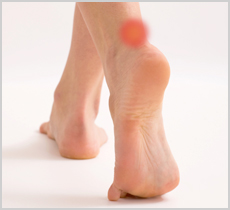Achilles Tendonitis Facts And Treatments
Achilles tendonitis may lead to a runner’s downfall. If left untreated, it could end anyone’s running career. Oh no!
Achilles tendonitis is the swelling of the Achilles tendon, the largest tendon in the body. Although it can withstand great stress on the feet, over-use and over exertion can cause it to swell.
Signs and Symptoms
Achilles tendinitis is an overuse injury of the Achilles tendon, the band of tissue that connects calf muscles at the back of the lower leg to your heel bone.
The pain associated with Achilles tendinitis typically begins as a mild ache in the back of the leg or above the heel after running or other sports activity. Other than swelling on the heels, watch out for pain, stiffness and loss of strength in the heel. This may be felt at night or in the morning. Pain could also be felt as your activity increases in intensity. Expect a thickening of the tendon somewhere above the heel and in some instances a lump on the tendon.
Causes of Achilles Tendonitis
This injury may be caused by the following:
- Sudden increase in amount or intensity of the training or exercise.
- Sudden change in training surface, or running on hard surfaces such as concrete.
- Having tight calf muscles adds to extra stress on the Achilles.
- Poor supportive footwear or wrong footwear.
- Excessive hill running or speed work
- Flat feet or over-pronated feet (feet suddenly turn inward or outward upon impact on the ground)
How to prevent Achilles Tendonitis
Here are some ways to prevent Achilles tendonitis:
Strengthen your muscles. Do exercises that strengthen the calves and the ankles. Toe-raise exercises should do the trick. This is done by rising up on the balls of your feet and after ten counts, lowering your heels back on the ground.
Stretch. Tight calf muscles contribute to the occurrence of Achilles tendonitis. This could be prevented by taking your time to stretch those muscles for 2-3 minutes before running.
Take it slow. Don’t just zoom out at the start of the run. Start gently and slowly. Allow your body to adjust as you increase the intensity of your training.
Choose your kicks wisely. Put on footwear with adequate support on your ankles and heel. Check if you are flat footed so you can choose the appropriate footwear.
Achilles Tendonitis Treatments
Most cases of Achilles tendinitis can be treated with relatively simple, at-home care under your doctor’s supervision. Self-care strategies are usually necessary to prevent recurring episodes.
If you were already struck by swelling at the Achilles tendon, here are some helpful tips.
Take a rest. Slow down or stop doing the activity that triggered the tendonitis. Do not resume the activity until you can move without any amount of pain.
Ice it. Put ice on the area that hurts the most. Do this as needed for up to 20 minutes per day or until the skin around the area becomes numb.
Take the right medication. Aspirin and Ibuprofen helps in reducing the swelling and alleviate the pain. Physicians may also suggest corticosteroid injections on the affected part to relieve the pain.
Consider other activities. Swimming, biking, or running on smoother surfaces are just a few suggestions. There are other work outs and regimens that are not weight bearing and reduces the stress on the Achilles tendon.
Get medical help. If the pain persists, you may have to see your doctor. Seek immediate medical attention if the pain or disability is severe. You may have a torn (ruptured) Achilles tendon.
Have you experienced Achilles tendonitis? How did you ease the pain and swelling? Share it with us in the comments below.
More about Running Injuries:

My doctor recommended a golf ball muscle roller to massage my tendinitis, worked very well and reduced the soreness, seriously check it out!